So here are a few pics of my current setup. A two tier, one pump, no automation ("direct-fired RIMS" if you will) with 15G pots (but I normally only do 5 gallon batches I just like the freedom to do a larger batch if I want) There is actually a burner underneath the 2nd tier HLT but I was having issues with getting it mounted before this brew session -
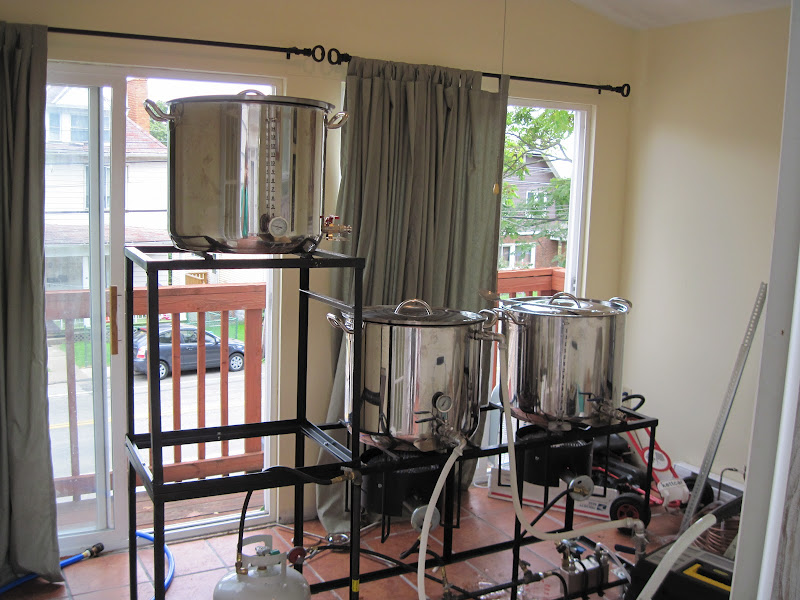
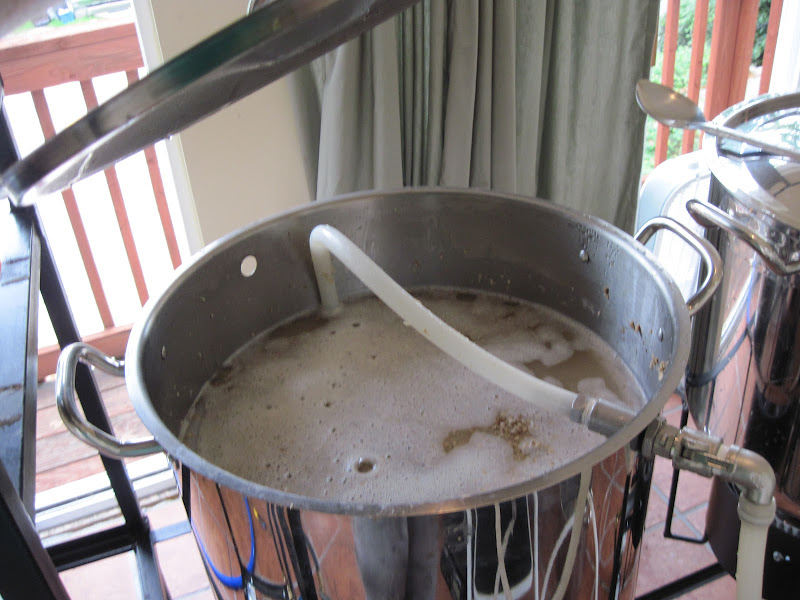
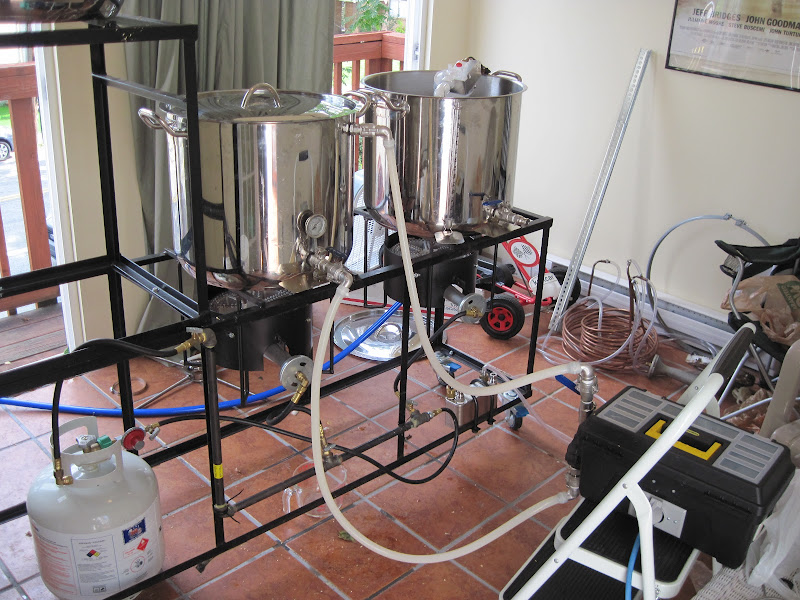
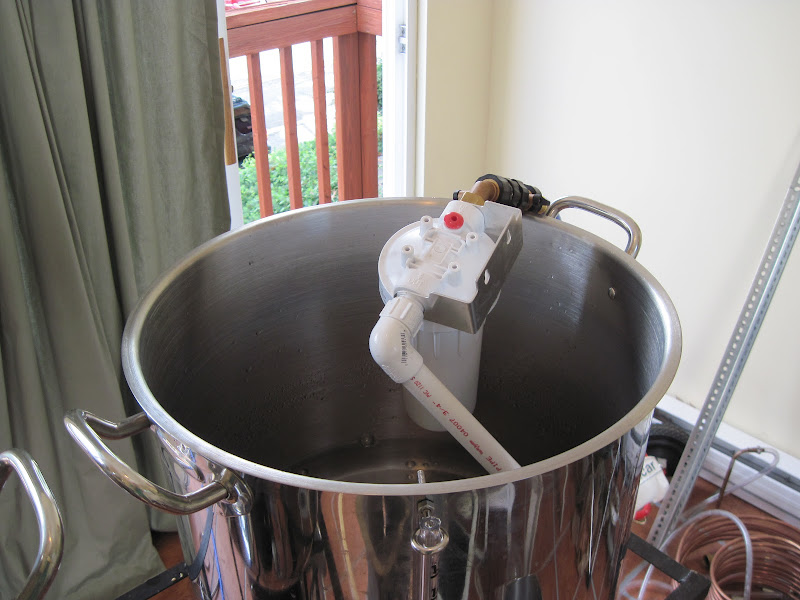
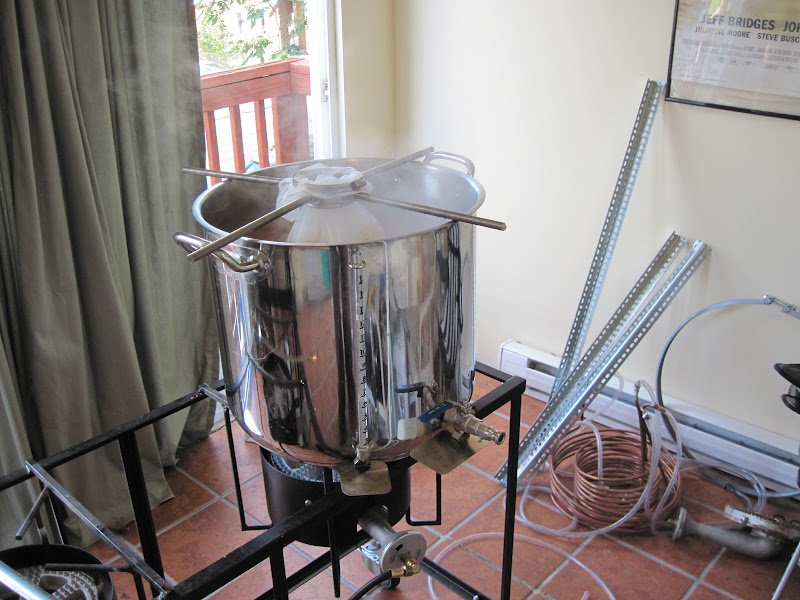
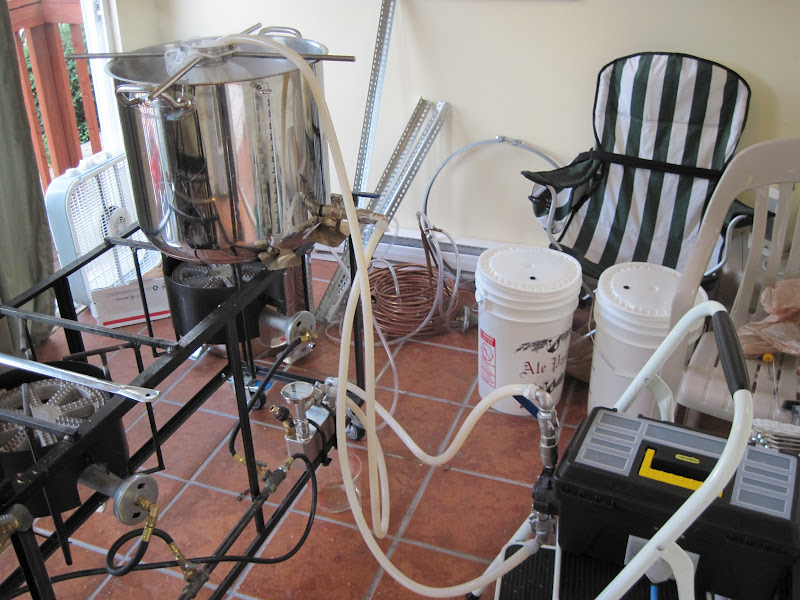
At some point I want to go all electric - something very close to The Electric Brewery, in fact probably just buying the The Electric Brewery control panel prewired as I have wired some basic stuff before, but as other folks have mentioned, I have a wife and children that I like to spend time with. However I do not have $3-4K to drop on the panel and other things at the time being.
Anyways, in the meantime I would like to make everything electric but the boil stage of the process (I would still be boiling with propane). I like the idea of RIMS, but I would still need something to heat the strike water, so that's out. So I was thinking of doing HERMS.
My first and most important question was:
#1 Will I be able to heat strike water and maintain with HERMS with only 120V service? I know people ask all the time and based on this spreadsheet that I downloaded from somewhere on here, it tells me that to bring 7 gallons of water from 60 to 160 with 1500 watts it should take 1h 12m, which is acceptable to me. But I guess I am more interested in feedback from people who have used 120V just for the HERMS aspect of it, not boiling.
#2 I would probably be adding another pump to my system to circulate the HLT water, so probably running two pumps (1.4A each) and the 1500W element (12.5A) and off of one circuit, so that would be 15.3, so running off of a 20A circuit should be OK, right? Unless I am forgetting to add something into the calculations.
#3 I had been looking at a 1 PID setup for now, and wanted to run an RTD like this - http://www.auberins.com/index.php?main_page=product_info&cPath=20_15&products_id=249 - to monitor temps. But if I am only monitoring mash temps (say at the output of the MLT) I still need a way to monitor the HLT temp for strike and sparge water. I had a thought of either doing the XLR setup like The Electric Brewery, and having one probe on the outlet of the HLT and one on the outlet of the MLT and switching them out when needs be, but not being familiar with PIDs I am not sure if this would work, or if doing two PIDs is the better solution.
Thanks for taking the time to read






At some point I want to go all electric - something very close to The Electric Brewery, in fact probably just buying the The Electric Brewery control panel prewired as I have wired some basic stuff before, but as other folks have mentioned, I have a wife and children that I like to spend time with. However I do not have $3-4K to drop on the panel and other things at the time being.
Anyways, in the meantime I would like to make everything electric but the boil stage of the process (I would still be boiling with propane). I like the idea of RIMS, but I would still need something to heat the strike water, so that's out. So I was thinking of doing HERMS.
My first and most important question was:
#1 Will I be able to heat strike water and maintain with HERMS with only 120V service? I know people ask all the time and based on this spreadsheet that I downloaded from somewhere on here, it tells me that to bring 7 gallons of water from 60 to 160 with 1500 watts it should take 1h 12m, which is acceptable to me. But I guess I am more interested in feedback from people who have used 120V just for the HERMS aspect of it, not boiling.
#2 I would probably be adding another pump to my system to circulate the HLT water, so probably running two pumps (1.4A each) and the 1500W element (12.5A) and off of one circuit, so that would be 15.3, so running off of a 20A circuit should be OK, right? Unless I am forgetting to add something into the calculations.
#3 I had been looking at a 1 PID setup for now, and wanted to run an RTD like this - http://www.auberins.com/index.php?main_page=product_info&cPath=20_15&products_id=249 - to monitor temps. But if I am only monitoring mash temps (say at the output of the MLT) I still need a way to monitor the HLT temp for strike and sparge water. I had a thought of either doing the XLR setup like The Electric Brewery, and having one probe on the outlet of the HLT and one on the outlet of the MLT and switching them out when needs be, but not being familiar with PIDs I am not sure if this would work, or if doing two PIDs is the better solution.
Thanks for taking the time to read


